Editor’s Note: This story was originally published in The At Home Issue of Life & Thyme Post. Grab your copy.
What began six years ago as a series of simple videos filmed in home kitchens as a passion project, Pasta Grannies has become a phenomenon, now a thriving YouTube channel and recently published cookbook. Chronicling elderly women across Italy kneading, rolling and cutting pasta dough into all manner of shapes, these nonne are the stars of a digital anthology that documents the country’s waning handmade pasta traditions. Pasta Grannies creator, Vicky Bennison, has been splitting her time between London and the Le Marche region of central Italy since 2005. She recently spoke to Life & Thyme from London about the series’ runaway success, as well as melding tradition with the modern age.
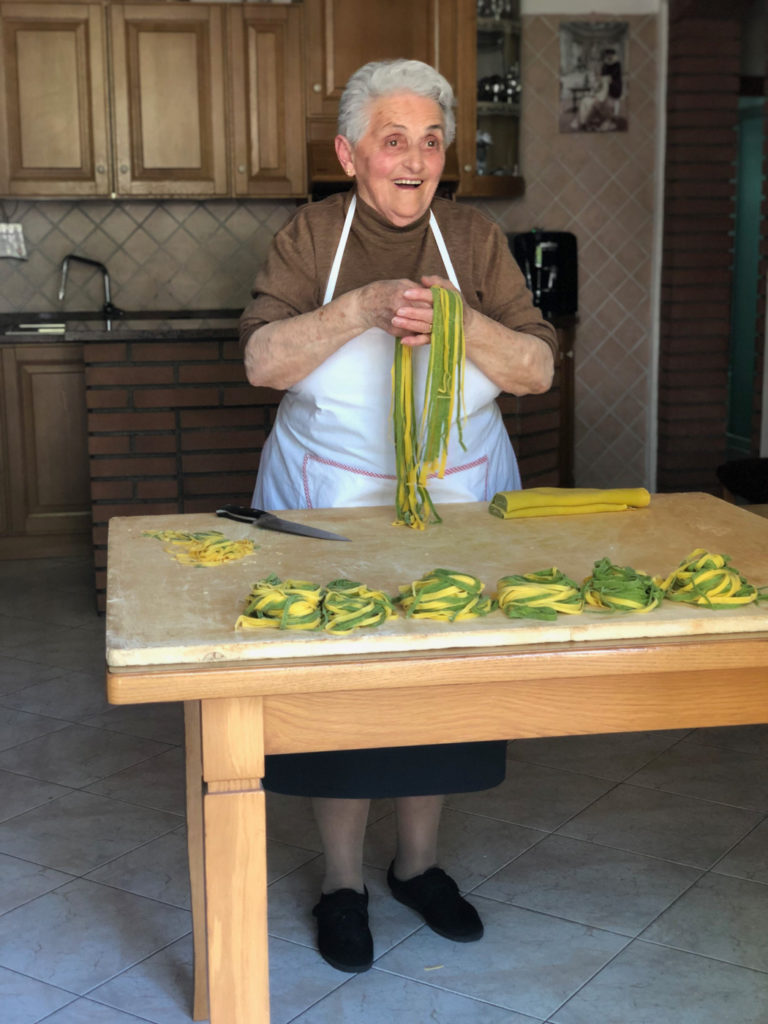
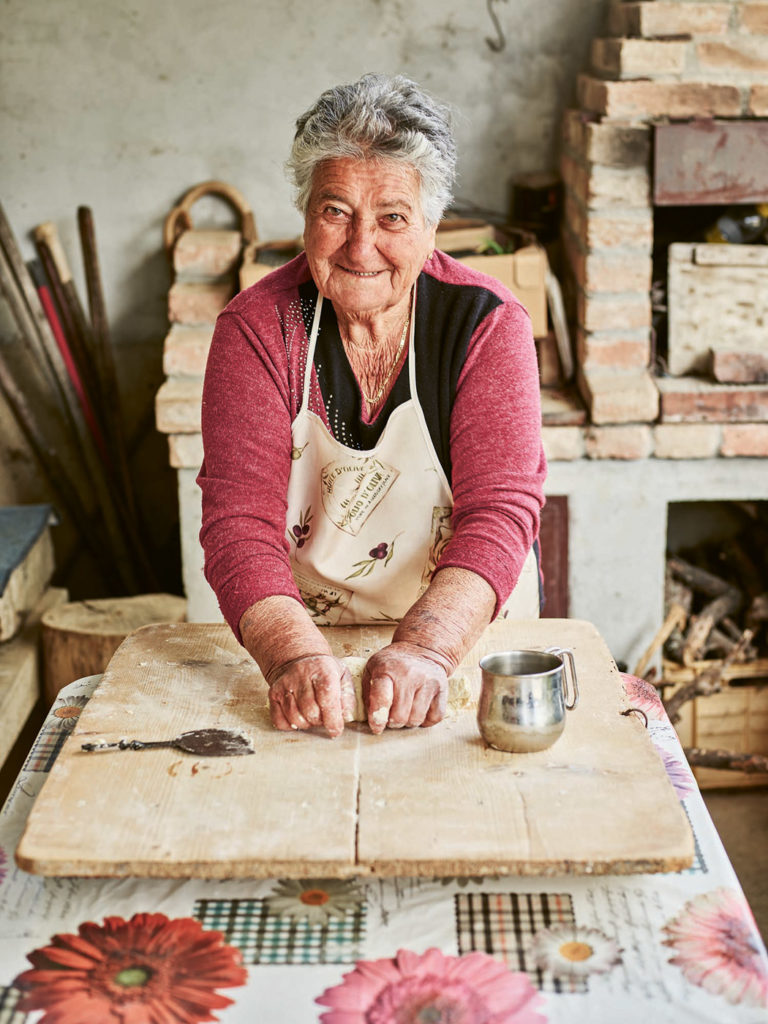
How did Pasta Grannies first come about?
I was researching a book, which never saw the light of day, but in that process noticed it was only older women who were making pasta on a daily basis by hand. These were lovely ladies who were getting up at five in the morning to make their pasta. I thought it’d be great to celebrate those women and make a record of what they’re doing, because they’re the last generation of women who actually had to make pasta to put food on the table. I wanted these older women to be center stage.
We often hear from chefs and other people about their mothers and their aunts and their grandmothers being their sources of inspiration, but we never see them. I felt there was space in food media for all these women cooks.
How did you decide to start filming their cooking?
I hadn’t actually done any filming at that point, and I think it shows. I knew nothing. That also formed the style; it looks quite journalistic and “as found.” Initially, I thought it’d be photography and stories, but the physicality of pasta making just has to be filmed. It doesn’t matter how well you describe it; you just don’t get the sense of what hard work it is, and what a great upper arm workout it is.
These women have never been in front of the camera before. We find them through word of mouth—they never volunteer themselves. We find them through their grandchildren, organizers of food festivals, friends, or friends of friends. When we meet them, we don’t want to be like a TV crew with big lights and take all day to set up. We just come in with small cameras and have a conversation with them as they make pasta.
It’s also a craft that requires expertise and practice.
That was a thing for me—making a record of the actual techniques. When someone makes cappelletti [“little hats” of pasta stuffed with filling] in Faenza, it’s not the same as cappelletti in Le Marche. Food changes as it travels out of necessity and [due to] the personal tastes of a household. It’s important that even if it changes and other people in other countries are doing it, that it’s still there, and still understood and celebrated.
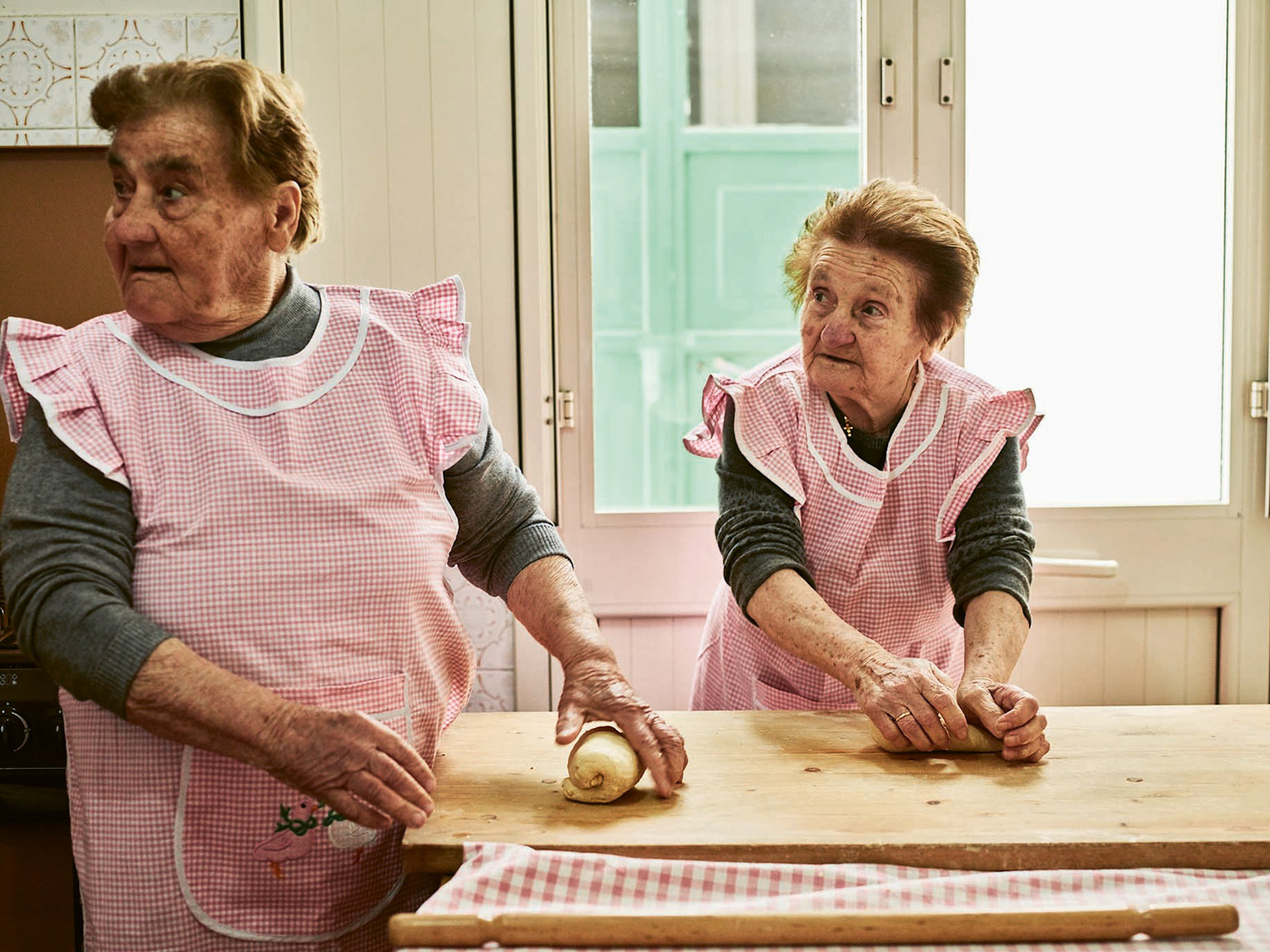
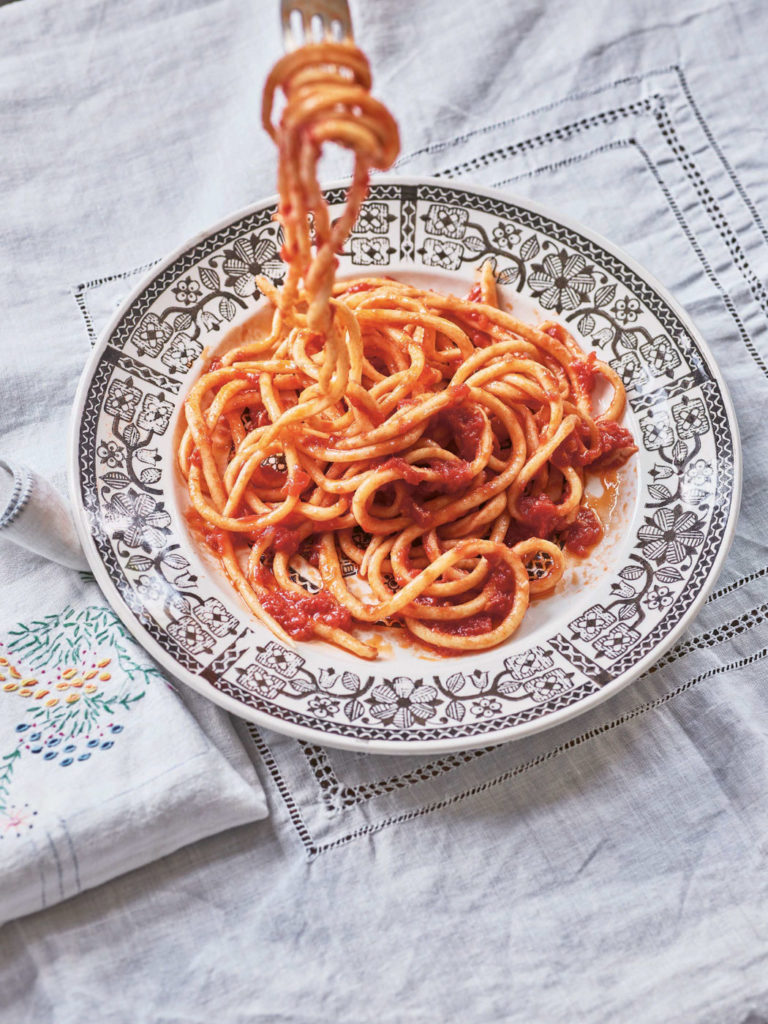
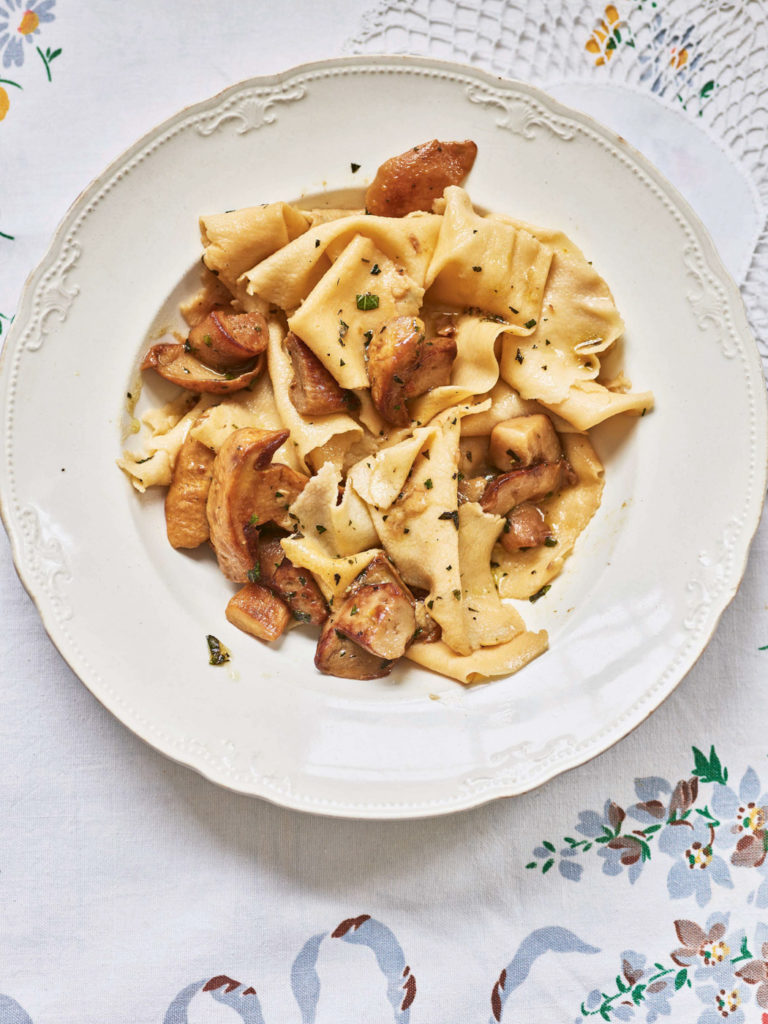
You didn’t have formal experience with using social media, yet Pasta Grannies has found a strong digital following.
We were filming, and YouTube is simply the obvious place to put film. When I had sixty-three subscribers, I knew exactly who they were. We’re now nearing the half-a-million mark, which is fantastic. My most popular video is a pasta from Sardinia by a woman called Cesaria, who’s now ninety-five. She’s making lorighittas [a twisted hoop-shaped pasta]. We’ve told her many times she’s world famous, and she just laughs. I’ve always felt I was doing something that was important, even if the audience was just me.
It’s interesting that a topic so centered on time-honored foods has found a home on such a modern medium.
I think it’s fantastic. It’s not something I set out to do; it’s just the way it worked out. Being able to harness that technology for something so traditional is amazing. It couldn’t have happened even ten or fifteen years ago; it’s the timing and the felicity of it.
Why do you think it’s been so popular?
Everybody loves pasta and everybody loves their grandmother even more, and they enjoy the memories and warm feelings it inspires. It’s two virtual hugs: you’ve got the pasta and the women who cook it.

Less people in Italy are making these intricate, labor-intensive pastas due in part to the commercialization of food production and women from younger generations entering the workforce. Do you think projects like this are helping to renew curiosity?
There’s an interest sometimes from the younger generation, from boys and girls, into the traditions and what their grandmothers are doing. I think they’ve worked out that they can have a career and make pasta. Making things from scratch, fermentation and baking—people have discovered it’s very relaxing. It’s a break from social media and from work.
We’re in a moment now that’s seeing a sheer explosion of interest not just in cooking, but in making traditional foods. Do you think that’s here to stay?
You’ve got a movement of people who were already saying, “I want to make things from scratch, even if it’s just over the weekend.” Then you have Covid-19 that puts an intensity and an immediacy to that general feeling, so it’s like a magnifying glass. Would we all still be doing it without social media? Yes, probably, but it’s another layer of making something happen even more. People like connectedness and community. People send us daily messages about the pasta they’re making—most will start with tagliatelle or cavatelli. You need to get your dough right before you make fancy shapes.
Have there been any particular moments while filming for Pasta Grannies that stood out for you?
Sometimes, there are stories where you think, wow! For example, Letizia, who’s now 101 in Sicily. She was very flirty with our camera man. “Will you marry me?” she said. She’s in the book and wrote a little essay on what pasta is because she didn’t want to forget about her experiences.
Giuesppina in Sardinia, who’s now ninety-seven—I absolutely adore her. She has the most wonderful animation and beautiful eyes with a great twinkle. She’s such a great laugh. Those who are aged over ninety have such a different perspective of the world—they’ve survived fascism and two World Wars. I adore all of them. I’m always delighted every time I meet another grandmother.
Photos courtesy of Pasta Grannies, published by Hardie Grant Publishing





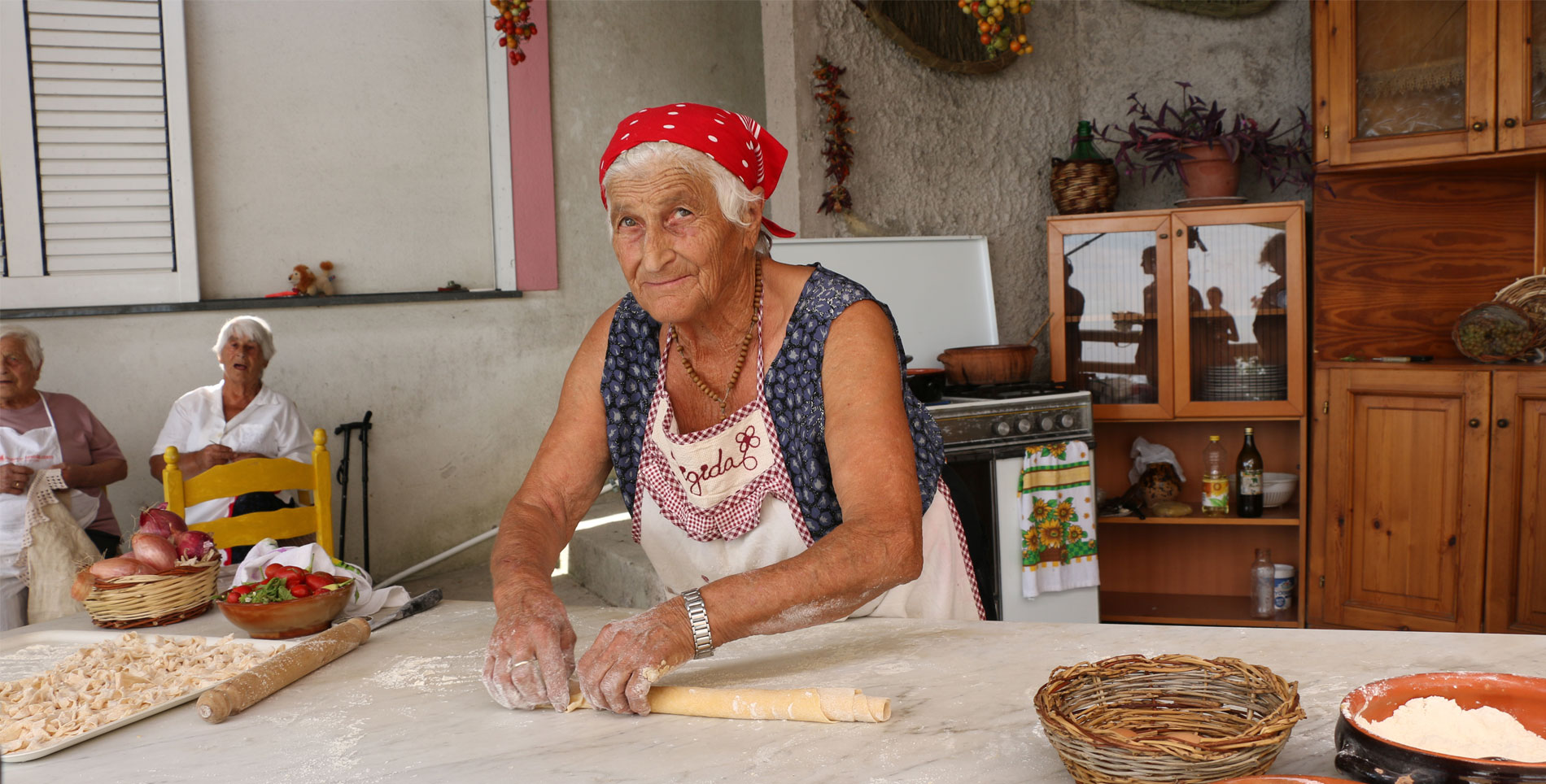

Our comments section is for members only.
Join today to gain exclusive access.